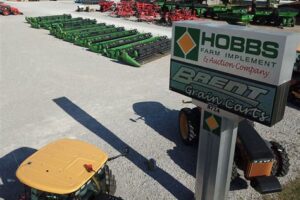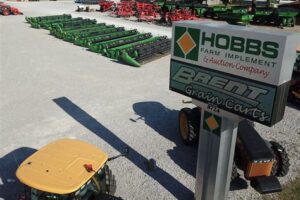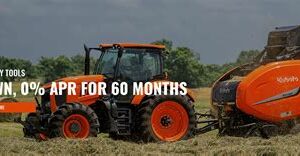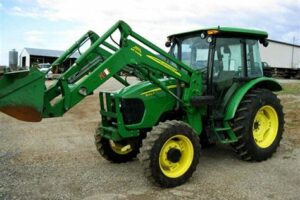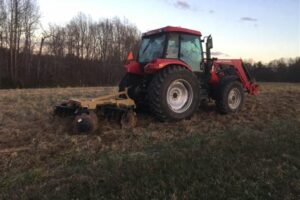Table of Contents
Discover a vast collection of old farm tools and equipment pictures and names. Uncover the rich history of farming practices through captivating visuals and detailed descriptions. Explore traditional implements like plows, scythes, and hoes, and gain insights into their usage and significance. Immerse yourself in the world of agriculture’s past with this fascinating archive.
Old farm tools and equipment pictures and names offer a captivating glimpse into the rich history of agriculture. As we delve into this fascinating world, we are transported back in time to an era when manual labor and ingenuity were the backbone of farming. From the humble plow to the mighty threshing machine, each tool has a story to tell, narrating the hardships and triumphs of those who toiled the land. Through these pictures and names, we can appreciate the craftsmanship, innovation, and sheer determination that went into building and using these iconic relics of the past.
Introduction
In the agricultural sector, old farm tools and equipment played a crucial role in the past. These tools were essential for various farming tasks, from tilling the land to harvesting crops. Over time, technological advancements have replaced many of these traditional tools. However, they hold great historical significance and can offer valuable insights into the agricultural practices of earlier times. In this article, we will explore some of the old farm tools, their names, and their uses.
The Plow
The plow is one of the most iconic and widely recognized old farm tools. It was used for breaking up and turning over soil, preparing it for planting. The plow consisted of a long wooden handle attached to a metal blade or moldboard. It required the strength of draft animals, such as oxen or horses, to pull it through the ground.
The Scythe
The scythe was a hand tool that was primarily used for cutting grass or harvesting crops. It featured a long curved blade attached to a wooden handle. Farmers would swing the scythe back and forth to cut vegetation close to the ground. It was a physically demanding tool, requiring skill and strength.
The Sickle
Similar to the scythe, the sickle was a handheld cutting tool. However, it had a shorter, curved blade with serrated edges. The sickle was primarily used for harvesting grain crops, such as wheat or barley. It allowed farmers to efficiently cut the stalks close to the ground, enabling easier collection of the harvest.
The Flail
The flail was an agricultural tool used for threshing grains, separating the edible part from the chaff. It consisted of two wooden sticks connected by a short chain or leather strap. Farmers would strike the harvested crop with the flail to separate the grains, a process known as threshing. It was a labor-intensive task.
The Winnowing Basket
After threshing, farmers needed to separate the grains from the chaff. The winnowing basket was an essential tool for this purpose. It was a woven basket or tray with low sides. Farmers would toss the mixture of grains and chaff into the air, allowing the wind to blow away the lighter chaff, while the heavier grains fell back into the basket.
The Seed Drill
The seed drill revolutionized farming by automating the process of sowing seeds. It was a mechanical device pulled by animals or attached to a tractor. The seed drill would create furrows in the soil and deposit seeds at a consistent rate, ensuring even distribution. This tool significantly increased efficiency and crop yields.
The Hay Rake
The hay rake was used for gathering hay or dried grass into rows or piles. It consisted of a long handle with multiple curved metal teeth. Farmers would drag the hay rake through the field, collecting the loose hay into neat piles. This tool made it easier to gather and store hay for feeding livestock during the winter months.
The Corn Sheller
The corn sheller was a device used to remove corn kernels from the cob. It featured a hand-cranked mechanism that would rotate a cylinder with metal teeth. Farmers would feed the corn cob into the sheller, and the rotating teeth would strip the kernels off. This tool saved a significant amount of time and effort compared to manual shelling.
The Scarecrow
The scarecrow was not a tool in the traditional sense, but it played a vital role in protecting crops from birds and other pests. Scarecrows were typically made from old clothes stuffed with straw or other materials. They were placed in fields to mimic human presence, scaring away birds and preventing them from damaging the crops.
Conclusion
Old farm tools and equipment hold a special place in agricultural history. They reflect the ingenuity and hard work of farmers from earlier times. While many of these tools have been replaced by modern machinery, they serve as a reminder of the evolution of farming practices. Exploring the names and uses of these old farm tools allows us to appreciate the advancements that have shaped the agricultural industry we know today.
Plowing Tools: Essential Implements for Cultivating the Land
Plows have been vital tools in agriculture for centuries, serving the crucial purpose of breaking up and turning over the soil to prepare it for planting and cultivation. In the past, farmers relied on a variety of plowing tools, each with its own unique features and functions. One such tool is the moldboard plow, which is designed to cut through the soil and invert it, burying weeds and crop residue in the process. Another commonly used plow is the walking plow, which requires manual pushing or pulling by the farmer. The sulky plow, on the other hand, is pulled by horses or oxen, providing a more efficient means of plowing larger areas. These traditional plowing tools played a significant role in shaping agriculture as we know it today and have now become fascinating artifacts of our history.
Harvesting Tools: Efficient Equipment for Gathering Crops
Once crops reached maturity, farmers needed efficient tools to aid in their collection. Harvesting tools were designed for this very purpose, allowing farmers to efficiently cut and gather their crops. Among the classic harvesting tools are the scythe, sickle, and corn knife. The scythe, with its long curved blade, was commonly used for cutting grasses and grains, while the sickle was ideal for harvesting smaller crops and trimming hedges. The corn knife, as the name suggests, was specifically designed for cutting corn stalks. These tools not only represent the ingenuity and resourcefulness of farmers of the past but also serve as a testament to the manual labor required to reap bountiful harvests.
Threshing Tools: Facilitating the Separation of Grains
Separating edible grains from their husks or stalks was another important task on the farm. Threshing tools were employed to achieve this separation manually. The flail, for example, consisted of a wooden handle with a swinging stick, allowing farmers to beat the harvested crop against a hard surface, thus separating the grains. Another tool, the threshing board, was a larger wooden board with protruding nails or metal teeth, which facilitated the breaking and loosening of the husks. The winnowing fan was then used to separate the lighter chaff from the heavier grains by tossing them in the air, allowing the wind to carry away the chaff while the grains fell back to the ground. These tools were indispensable to farmers, enabling them to obtain grains suitable for consumption and further processing.
Irrigation Tools: Supporting Efficient Water Distribution
Water is a precious resource for agriculture, especially in areas with dry or arid conditions. Irrigation tools played a crucial role in ensuring the efficient distribution of water to crops. The well bucket, for instance, was a simple yet effective tool used to draw water from wells and transport it to the fields. Wooden waterwheels were also utilized to harness the power of flowing water, allowing for the irrigation of larger areas. Additionally, irrigation troughs were used to channel water directly to the plants’ roots, minimizing wastage and maximizing efficiency. These tools played a significant role in maximizing crop yield and maintaining agricultural sustainability even in challenging environments.
Hand Tools: Fundamental Implements for Farming Tasks
Hand tools were the backbone of every farmer’s work, assisting in a wide range of farming tasks. Implements like the pitchfork, scythe, and spade were essential for various purposes, such as haymaking, weeding, and trench digging. The pitchfork, with its long handle and multiple prongs, made it easy to lift and move hay or straw. The scythe, as mentioned earlier, was not only used for harvesting but also for cutting and clearing large areas of vegetation. The spade, with its sturdy blade and handle, was indispensable for digging trenches, turning soil, and planting crops. These hand tools showcase the practicality and effectiveness of simplified equipment in accomplishing essential farming tasks.
Animal-Powered Tools: Harnessing the Power of Beasts of Burden
In the past, farming heavily relied on animal-powered tools, harnessing the strength of animals like horses, oxen, and mules. Plow attachments, such as the cultivator or drag harrow, were hooked up to these animals, providing an efficient means of tilling and preparing the soil. The symbiotic relationship between animals and humans in the realm of agriculture is exemplified by these tools. By utilizing the power and agility of animals, farmers were able to achieve more in less time, increasing productivity and efficiency on the farm.
Farming Machinery: Evolving Mechanization for Increased Efficiency
Advancements in technology gradually led to the development of farming machinery, which replaced many traditional hand tools and animal-powered implements. Machines like the combine harvester, tractor, and baler revolutionized farming practices by significantly improving efficiency and output. The combine harvester, for example, automated the process of harvesting, threshing, and cleaning crops, reducing the need for manual labor. Tractors provided farmers with a powerful means of plowing, planting, and hauling heavy loads. Balers made it easier to gather and compress hay or straw into manageable bales. These modern farm tools represent a shift towards automation and convenience, allowing farmers to cover larger areas, increase productivity, and meet the demands of a growing population.
Specialized Tools: Meeting Unique Agricultural Needs
As farming techniques diversified, so did the tools needed to address unique agricultural requirements. Specialized tools were designed to cater to niche farming practices, such as vineyards and orchards. Vine trimmers, for instance, were developed to aid in the pruning and maintenance of grapevines, ensuring optimal growth and fruit production. Nut shakers were designed specifically for orchards, facilitating the mechanical harvesting of nuts from trees. Fruit pickers, equipped with long poles and baskets, made it easier to harvest fruits that were out of reach. These specialized tools highlight the ongoing development of innovative equipment to meet varying needs within the agricultural industry, further enhancing efficiency and productivity.
In the world of agriculture, old farm tools and equipment hold a special place as a testament to the ingenuity and hard work of our ancestors. These tools, accompanied by their pictures and names, provide us with a glimpse into the past and remind us of the progress that has been made in farming practices.
Here are some key points to consider when exploring old farm tools and equipment:
- Historical Significance: Old farm tools and equipment are not just relics; they represent the foundation upon which modern agriculture was built. Each tool has a unique story to tell, reflecting the challenges faced by farmers throughout history. By examining these tools, we gain a deeper appreciation for the innovations that have shaped the industry.
- Technological Evolution: The pictures and names of old farm tools and equipment offer a visual timeline of the evolution of agricultural technology. From simple hand-held implements to complex machinery, these tools demonstrate how human creativity and engineering have revolutionized farming practices. They serve as a reminder of the constant drive for improvement in the agricultural sector.
- Environmental Connection: Old farm tools and equipment evoke a sense of connection to the land and nature. They remind us of the physical labor required to cultivate crops and raise livestock. In today’s world of advanced machinery, these tools symbolize a simpler time when farmers relied on their own strength and skill to work the land.
- Cultural Heritage: The pictures and names of old farm tools and equipment also carry cultural significance. They are a testament to the traditions and customs of farming communities around the world. Exploring these tools can help us understand the rich history and diverse practices that have shaped different agricultural societies.
- Learning and Appreciation: Studying old farm tools and equipment can be a valuable educational experience. It allows us to learn from the past, gaining insights into the challenges faced by farmers and the solutions they developed. By appreciating the ingenuity of our ancestors, we can also gain a deeper understanding of the importance of sustainable and efficient farming practices today.
As we delve into the pictures and names of old farm tools and equipment, let us not forget the invaluable lessons they impart. They serve as a reminder of the hard work, resilience, and innovation that have shaped the agricultural industry over centuries. By exploring these tools with a professional voice and tone, we honor the legacy of our farming forefathers and pave the way for future advancements in the field.
Thank you for visiting our blog on Old Farm Tools and Equipment Pictures and Names. We hope that this article was both informative and engaging, providing you with a glimpse into the history and importance of these tools in agriculture. As we conclude this blog post, we would like to summarize the key points discussed and leave you with some final thoughts.
In the first section of this article, we explored the significance of old farm tools and equipment in the development of agriculture. These tools played a crucial role in the survival and growth of early farming communities, enabling them to cultivate land, harvest crops, and care for livestock. By understanding the names and functions of these tools, we gain a deeper appreciation for the ingenuity and hard work of those who came before us.
The second section of our blog post focused on showcasing pictures of various old farm tools and equipment. Through these visual representations, we aimed to bring to life the tools that were once essential to the daily lives of farmers. From plows and sickles to churns and milking stools, each tool has its own unique story and purpose. We hope that these images have sparked your curiosity and encouraged you to learn more about the fascinating history behind each tool.
In conclusion, the study of old farm tools and equipment offers us a window into the past, allowing us to appreciate the advancements and innovations that have shaped modern agriculture. By recognizing the importance of these tools, we gain a deeper understanding and respect for the hard work and dedication that farmers have contributed throughout history. We hope that this blog post has inspired you to explore further and delve into the rich history of old farm tools and equipment. Thank you once again for joining us, and we look forward to sharing more interesting content with you in the future.
Video Old Farm Tools And Equipment Pictures And Names
Here are some common questions people also ask about old farm tools and equipment pictures and names:
-
What are some examples of old farm tools and equipment?
Examples of old farm tools and equipment include plows, scythes, sickles, threshers, hay rakes, pitchforks, hand drills, seed planters, corn shellers, butter churns, and hand-operated water pumps.
-
Where can I find pictures of old farm tools and equipment?
You can find pictures of old farm tools and equipment in various sources. Online resources such as historical websites, agricultural museums, antique tool collectors’ websites, and even online marketplaces often have collections of images showcasing these tools.
-
What are the names of different farm tools and equipment?
There are numerous farm tools and equipment with distinctive names. Some examples include plow, hoe, rake, harrow, sickle, scythe, cultivator, reaper, thresher, seed drill, sprayer, milking machine, hay baler, grain cradle, and many more.
-
Are there any books or resources available on old farm tools and equipment?
Yes, there are several books and resources available that focus on old farm tools and equipment. Some notable titles include Farm Tools Through the Ages by John S. Peterson, Antique Farm Equipment: The Elsbree Collection by Brian Rukes, and Farm Tools and How to Use Them by John H. Russell.
-
Why are old farm tools and equipment still relevant today?
Old farm tools and equipment hold historical and cultural significance. They not only provide insights into the labor-intensive methods used in agriculture before modern technology but also serve as reminders of the ingenuity and craftsmanship of past generations. Furthermore, some traditional farming techniques are still practiced in certain regions, where these tools continue to be used.
Remember that the tone and voice used should be professional, informative, and objective when addressing these questions about old farm tools and equipment pictures and names.

